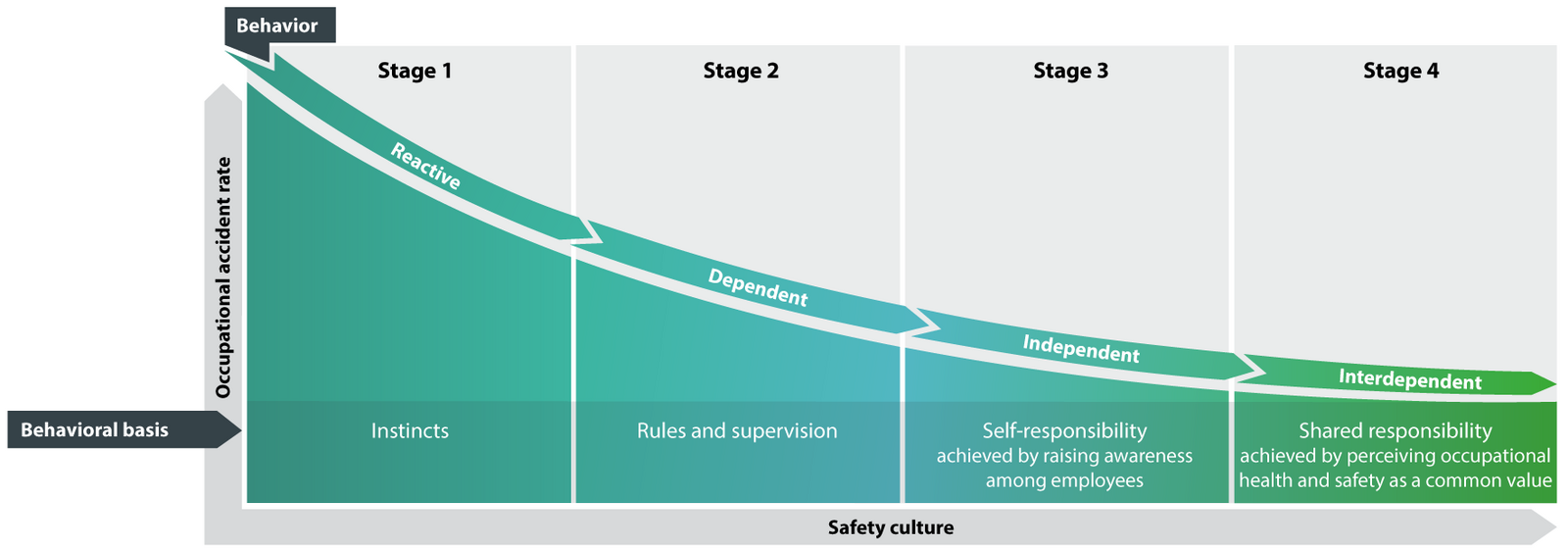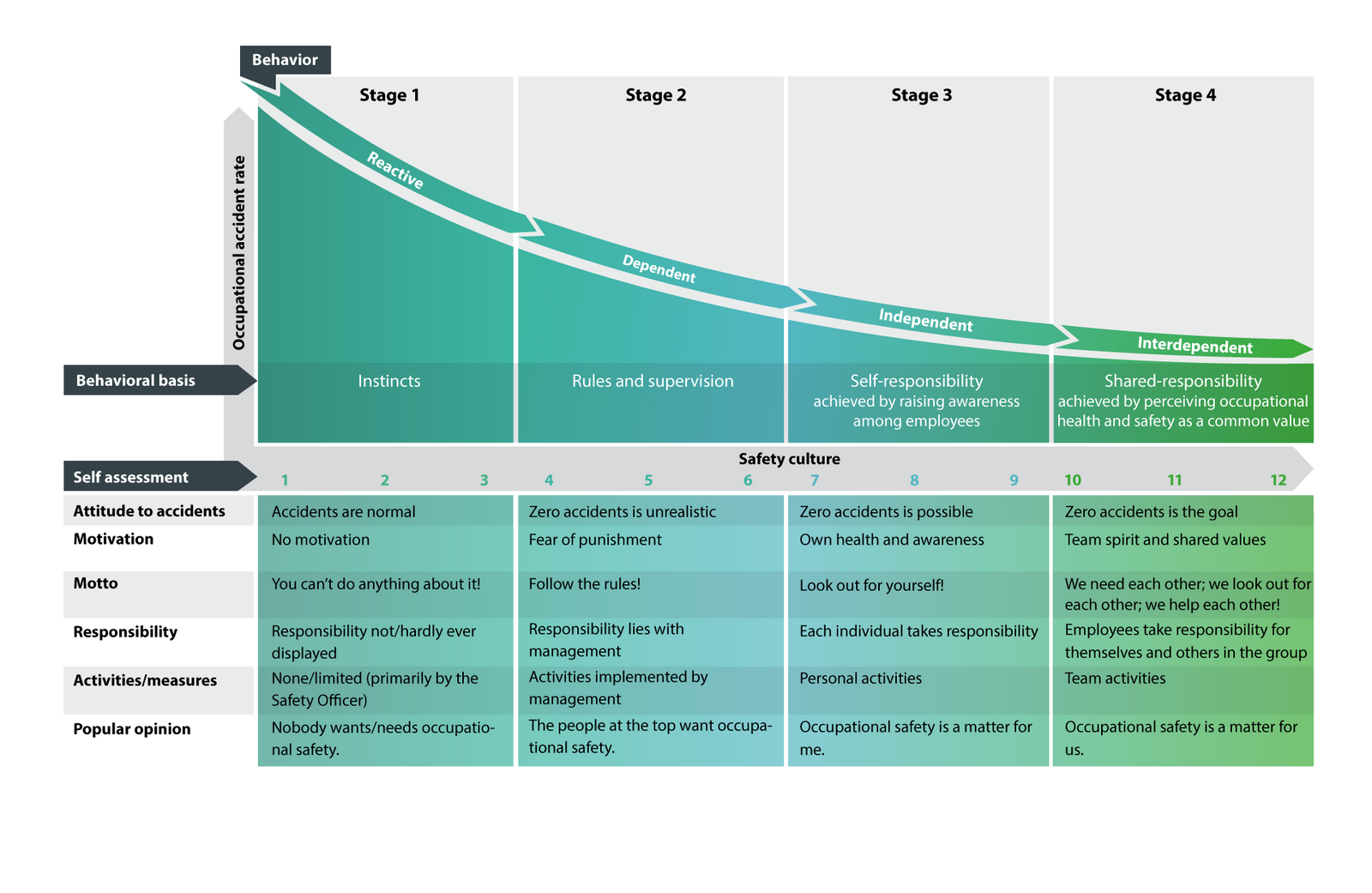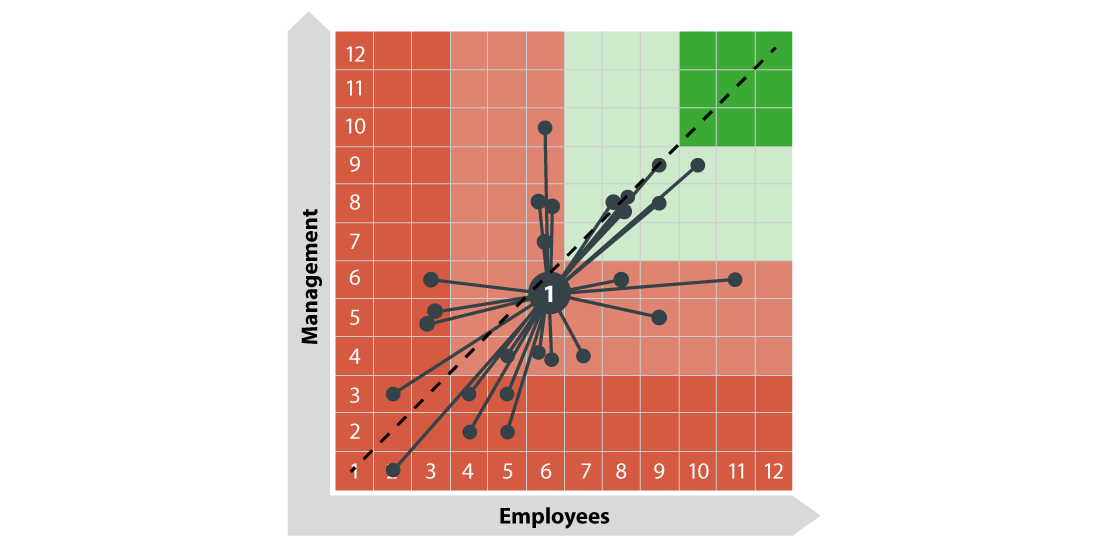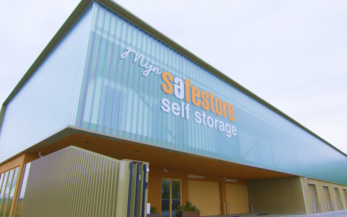10 minutes06/08/2022
by Stefan Bartel
Few managers are aware that occupational safety is directly linked to the maturity of a company’s culture . The Bradley Curve was developed to illustrate this connection. It demonstrates that motivated employees who identify with their company are more responsible and value occupational health and safety, thus experiencing fewer accidents. The fundamental theory behind the Bradley Curve is that most workplace accidents are caused, or at least not prevented, by human behavior. In turn, the following factors have a significant influence on employee behavior:
- A person’s internal attitude: Your employees acquire these attitudes during socialization and bring them into their work.
- Leadership : How a workforce behaves is strongly influenced by the instructions of managerial staff, along with the examples they set and the actions they permit. Leadership is therefore directly reflected in the accident rate.
- Corporate culture: In this case the behaviors considered correct, appropriate, and desirable by a majority of the workforce. The way employees behave always reflects in a company’s culture.
If you want to influence the accident rate and encourage employees to behave safely, you should look at two factors: leadership and corporate culture. These factors indirectly influence employees’ internal attitudes.
In this article, we will explain how you can use the Bradley Curve to identify which stage your company’s culture is at, as well as the steps you can take toimprove company safetymake it fit for the future, motivate your employees, and reduce your accident rate.










